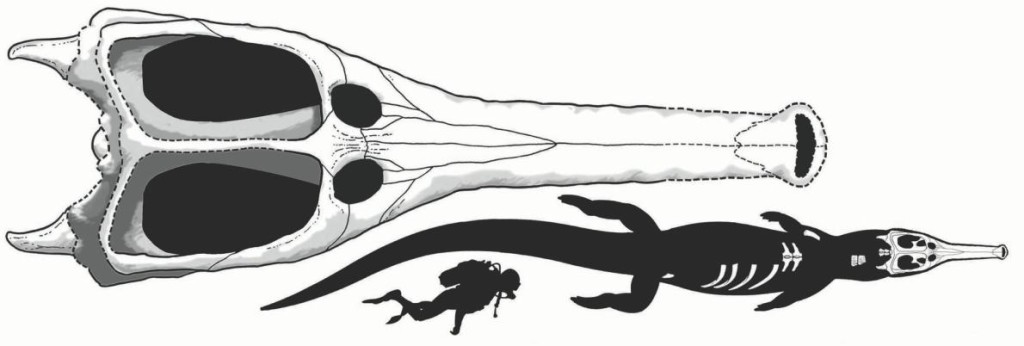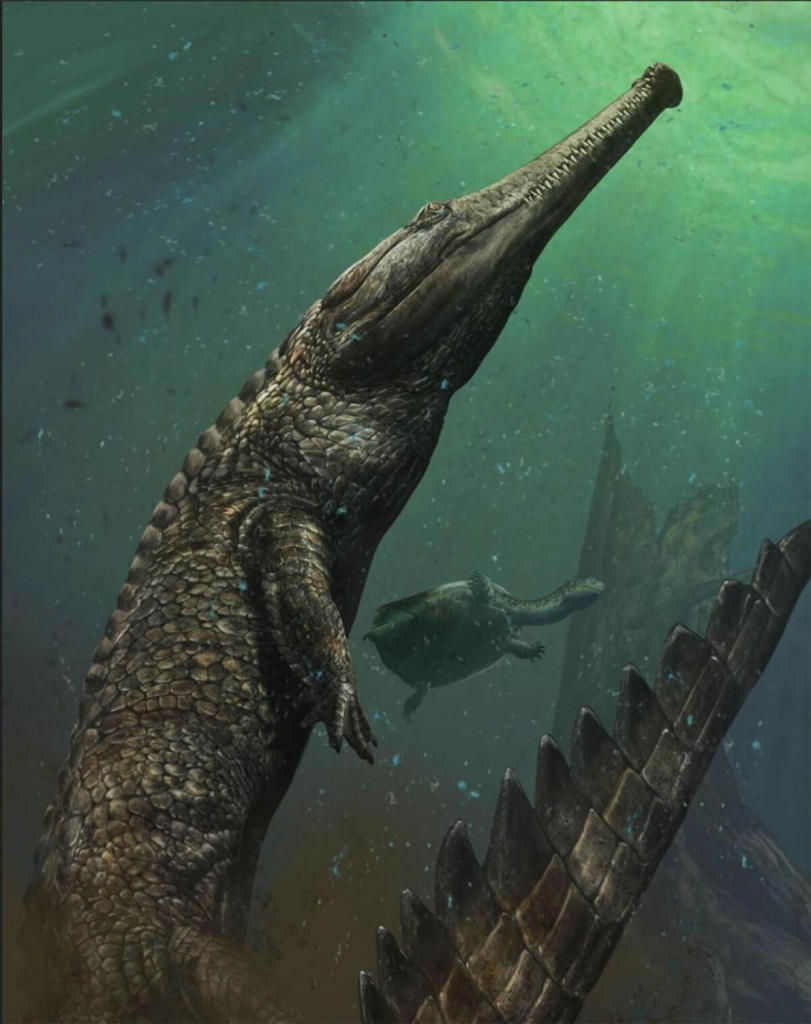The biggest sea-dwelling crocodile ever found has turned up in the Tunisian desert. The whopper of a prehistoric predator grew to over 30 feet long (nearly ten meters) and weighed three tons.Paleontologists have dubbed the new species Machimosaurus rex and describe it Monday in the journal Cretaceous Research.Although the recovered remains are fragmentary, enough remained in the 120-million-year-old rock to identify the reptile as the largest known member of a peculiar lineage of crocodiles that spent their lives almost entirely at sea.
“This is a neat new discovery from a part of the world that hasn’t been well-explored for fossils,” says University of Edinburgh paleontologist Stephen Brusatte, who was not involved with the new study.
The fossils, including a skull and a smattering of other bones, were discovered by Federico Fanti of the University of Bologna in Italy and colleagues with support from the National Geographic Society.
Big Bite : Scientists are awaiting the discovery of a more complete skeleton to figure out exactly how large Machimosaurus rex was. But assuming that the new species had similar proportions as its close relatives, Fanti estimates that Machimosaurus rex stretched about 31 feet (9.6 meters) in length.While not as large as some of its later, distant relatives that lived in freshwater, that makes Machimosaurus rex the biggest ocean-dwelling member of the crocodile family tree.
The biggest freshwater croc ever, Sarcosuchus imperator, lived 110 million years ago, grew as long as 40 feet (12 meters), and weighed up to eight metric tons (17,500 pounds). Since the time of this and other giants such as the alligator Deinosuchus, many crocodile lineages have died out, leaving today’s saltwater crocs closely related.The carnivore’s teeth may hint at what it fed on in the ancient ocean. “Machimosaurus rex had stocky, relatively short and rounded teeth,” Fanti says, “and a massive skull capable of a remarkable bite force.” This cluster of features leads Fanti to suggest that the croc was a generalist hunter that took a variety of prey, including large marine turtles.
“It would likely have been something of an ambush predator, hanging around in shallow water hunting turtles and fishes and maybe waiting for some land animals to come a little too close to the shore,” Brusatte adds.
Tough Survivor :For scientists, the most important aspect of Machimosaurus rex isn’t so much its size as when it lived.Paleontologists have long debated whether or not there was a mass extinction at the end of the Jurassic period, 145 million years ago. The group that includes Machimosaurus, called the teleosaurids, is among those thought to have died out.

A reconstruction of Machimosaurus rex based on the fossil bones found (white) shows its size compared with a human.
ARTWORK BY MARCO AUDITORE
The discovery of Machimosaurus rex in later rocks from the Cretaceous hints that if there was a mass extinction, it didn’t kill off life planetwide. “The new find adds to growing evidence that a lot of marine reptiles made it across the boundary and through the supposed extinction,” Brusatte says.
Rather than being a rapid extermination, the extinction may have been a more drawn-out transition. “In our interpretation,” Fanti says, “the end-Jurassic event was global in its effects but was mostly likely a complex sequence of local biological crises that are still poorly documented.”
One of the outstanding mysteries is why the marine crocodiles didn’t reclaim their former glory. Even though the family of Machimosaurus rex survived for longer than thought, they didn’t appear to thrive as they had in the Jurassic.
While Machimosaurus rex was certainly impressive in size, Brusatte says, “it may have just been a dead croc walking.”
Courtesy: Brian Switek’s blog Laelaps on NationalGeographic.com
Key: WFS,Riffin T Sajeev,Russel T Sajeev,World Fossil Society,Machimosaurus



 January 12th, 2016
January 12th, 2016  Riffin
Riffin 
 Posted in
Posted in  Tags:
Tags: 